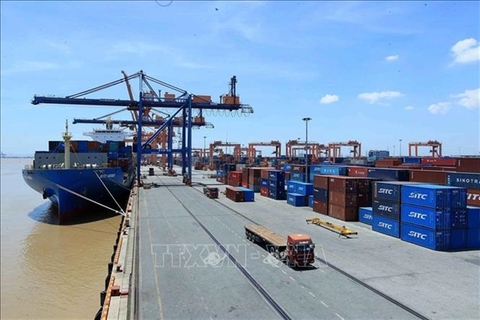according to a report by the Institute of Chartered Accountants in England and Wales and Oxford Economics.
 |
|
A sea port in the country. Viet Nam will emerge from the pandemic the least affected of all countries in Southeast Asia.
|
The Coronavirus global outlook: After the Outbreak report says most regional economies will fall into recession in the first half of 2020 due to the severe impact of the outbreak.
However, growth is expected to spring back to an average of 8 per cent in 2021, supported by fiscal stimulus packages and monetary easing.
An enduring COVID-19 outbreak will see world GDP shrink by 4.7 per cent in 2020, more than double the impact of the global financial crisis in 2008 and the biggest recession in post-war history.
Similarly, most Southeast Asian economies will fall into recession in the first half of 2020 and record a 1.9 per cent contraction for the year.
Measures to lock down countries and cities in the region to varying degrees have substantially cut domestic demand, with many countries bringing in restrictions on exports of food produce to safeguard domestic food supplies, further dampening export growth. Thailand is forecast to be one of the worst hit, because tourism and travel, which have particularly suffered because of the pandemic, account for 20 per cent of its GDP.
The adverse impact on Southeast Asia will ease in the second half of 2020 as Chinese import demand and global trade recover at a consistent pace, while a slower pace of normalisation will continue to weigh on tourism-dependent economies.
Co-ordinated fiscal stimulus packages and monetary easing by authorities across the region will support the recovery in economic growth.
Mark Billington, ICAEW regional director, Greater China and South-East Asia, said: “Beyond a global health and economic crisis, the pandemic is also an important chapter of an unfolding bigger inter-connected catastrophe of climate emergency, massive bio-diversity loss and increasing inequality.
“Our recovery will need to include sustainable solutions that benefit nature, society and economy. As countries in the region gradually ease lockdown restrictions and start to open their economies, organisations and businesses will have to adapt to a ‘new normal’ for sustained growth and performance in the post-outbreak world.”
At the regional Virtual Economic Forum hosted by ICAEW on June 4, industry leaders discussed the impact of COVID-19 on businesses in the ASEAN region, and panellists shared their viewpoints on the impact of the pandemic on Southeast Asian economies and the recovery outlook.
Viet Nam is poised to benefit from a manufacturing shift by multinational companies though the impact of the slowdown on global demand that would continue to weigh on its supply chains and manufacturing sector. — VNS